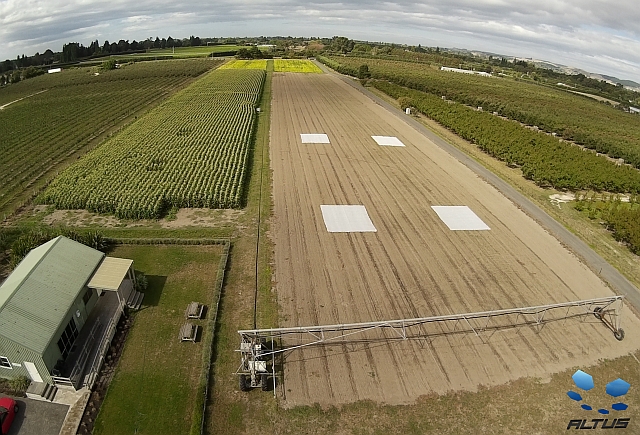Enhancing the profitability and value of New Zealand onions
The purpose of this OnionsNZ MPI Sustainable Farming Fund research project is to provide the industry with tools to monitor and manage low yields and variability in onion yield and bulb quality.
In this collaboration with Plant & Food Research, LandWISE is providing precision agriculture paddock scale measurement and interpretation.
We have base maps from topography and surface ponding analysis completed by Page Bloomer Associates, and from AgriOptics Dual EM soil mapping. We also have some previous crop data including true colour, false colour and NDVI images of winter cover crops between successive onion crops in these paddocks. More details here>
We tracked crop development with a range of sensor technologies including AltusUAS MicaSense from UAV, Agricultural Software GroundCover app and some satellite imagery.
The collaboration with Plant & Food Research was to help us develop protocols to monitor crop development and yield variation (spatially and temporally). Linking these with crop modelling and agronomy helps determine why variation is occurring.
Crops were traced from paddock through harvest and storage so that post-harvest quality issues can be related to factors during growth. Linking paddock production to packhouse performance and back again may be key in unlocking value potential.
Grower led focus groups are involved in the project and analysis of results. They have a vital role in the development of practical tools they can use to monitor and quantify variability, to identify the causes of loss of yield and quality and share best practice to improve sustainability and grower returns.





 Page Bloomer Associates
Page Bloomer Associates AgriOptics
AgriOptics AltusUAS
AltusUAS ASL Software
ASL Software






























 ASL software, (LandWISE Yield Estimation software) and apps for pipfruit and irrigation industries) have developed a ground cover measurement tool. We used it to map MicroFarm onion crop canopies and found good correlation with final yields.
ASL software, (LandWISE Yield Estimation software) and apps for pipfruit and irrigation industries) have developed a ground cover measurement tool. We used it to map MicroFarm onion crop canopies and found good correlation with final yields.
